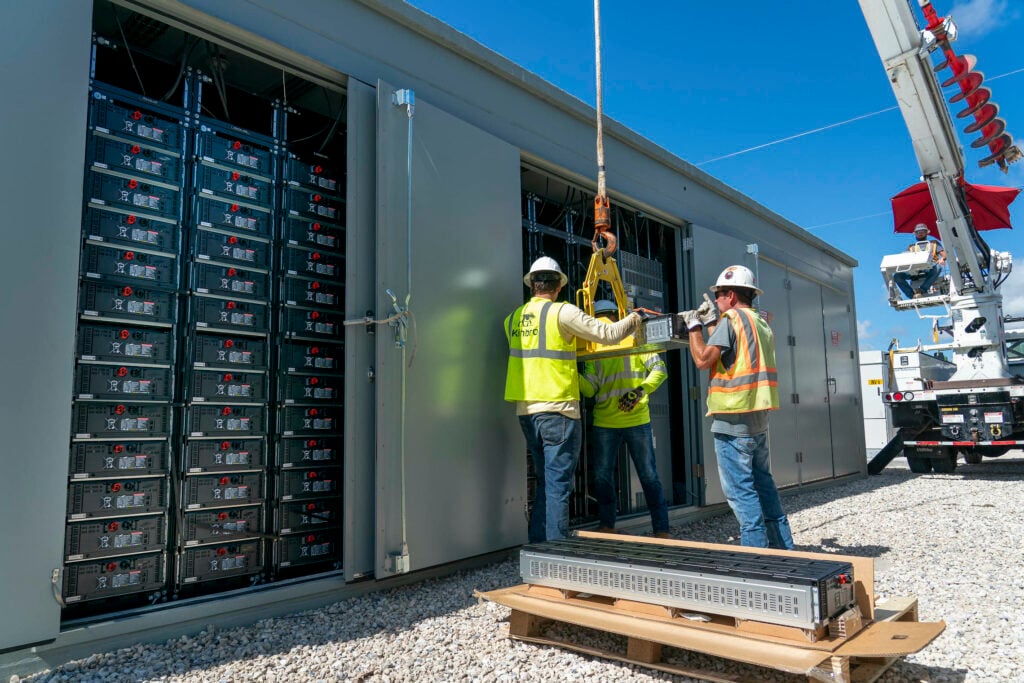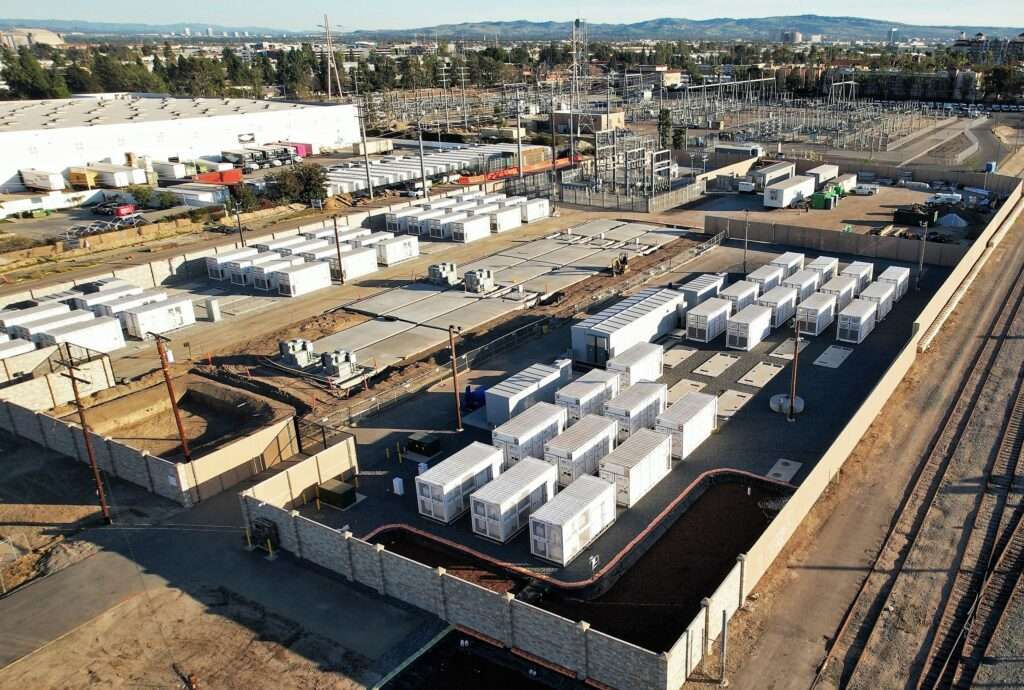
Energy storage deployment in the US is growing at a phenomenal pace. But the appetite for storage is much greater than the ability to build, and getting grid interconnection rights is often the biggest hurdle. As reported by Energy-Storage.news back in March, a new multi-stakeholder project aims to correct that. Gwen Brown, communications director for the US Interstate Renewable Energy Council, which has led the project, explains in further detail.
Energy storage is a critical piece of the puzzle in the transition to an electric grid powered by high levels of renewable energy. Storage makes it possible to capture the intermittent power produced by distributed energy resources (DERs) like solar and wind and use it when it is most needed.
Enjoy 12 months of exclusive analysis
- Regular insight and analysis of the industry’s biggest developments
- In-depth interviews with the industry’s leading figures
- Annual digital subscription to the PV Tech Power journal
- Discounts on Solar Media’s portfolio of events, in-person and virtual
However, many of the most valuable characteristics of storage can’t easily be utilised on the distribution grid today. That’s because most state-level interconnection rules—the rules that govern whether and how DERs are permitted to connect to the grid—have not been updated to deal with energy storage systems in a way that maximises customer flexibility and ensures the continued safe and reliable operation of the grid.
For example, some DER systems with ESS do not send any electricity back to the grid (non-export systems); others may be designed so that the energy they do send to the grid never exceeds a certain level (limited-export systems) or is exported only during specific times of the day. Yet most interconnection procedures use outdated rules of thumb for assessing the grid impacts of ESS that fail to account for these capabilities.
This and other technical and regulatory barriers make the interconnection process challenging for energy storage, slowing market growth and hindering our ability to deploy these systems at the pace needed to meet climate and clean energy goals.
A new suite of actionable recommendations for regulators and utilities aims to change that. The project team is led by the Interstate Renewable Energy Council (IREC) with support from the U.S. Department of Energy Solar Energy Technologies Office, includes the Electric Power Research Institute (EPRI), the Solar Energy Industries Association (SEIA), the California Solar & Storage Association (CALSSA), utilities New Hampshire Electric Cooperative Inc. (NHEC) and PacifiCorp, and law firm Shute, Mihaly & Weinberger, LLP (SMW).
New toolkit provides solutions for storage interconnection
The Toolkit and Guidance for the Interconnection of Energy Storage and Solar-Plus-Storage provides vetted, consensus-based solutions to eight key regulatory and technical barriers to the interconnection of energy storage and solar-plus-storage systems on the distribution grid. It is based on more thana year of research and analysis and includes model language that utility regulators can draw from to update state interconnection rules in diverse states and markets across the US.
Adoption of these recommended solutions can have a significant impact on how many distributed energy resources (DERs), like residential and commercial solar PV systems, can be added to the grid. For example, original research for the Toolkit found that when energy storage is used to control the export of energy from DERs, the grid can host more DER capacity. In the most pronounced cases, modeling and simulation research found that using storage to limit DER export (one of the issues the Toolkit provides guidance on) can double available DER capacity on a circuit!
This article provides a high-level overview of the challenges addressed by this Toolkit and their recommended solutions.
Updating interconnection procedures to be inclusive of storage
One of the most basic barriers to interconnecting energy storage systems on the distribution grid is the fact that many interconnection rules do not mention energy storage or specify how existing rules and related documents apply to storage systems.
Interconnection rules need to clearly state that the procedures apply to the interconnection of new standalone ESS and ESS paired with other generators, such as solar. They also should define ESS and related terms necessary to enabling the unique operating capabilities of storage (e.g., “non-export,” “limited-export,” and “operating schedule,” to name a few), and the requirements for using related equipment and functions. Related interconnection documents, such as application forms, study agreements, and interconnection agreements, also need to be updated accordingly. Chapter II of the Toolkit provides guidance on how regulators and utilities can make these changes.

Interconnection rules need to recognise control of energy export by ESS
The ability of ESS to limit the export of energy to the grid is one of its most valuable traits. That’s because energy export is a major factor in how a system will impact the grid and whether it can be interconnected without the need for distribution system equipment upgrades.
One reason interconnection rules fail to recognize this functionality is that there has been a lack of consensus on acceptable methods that can be used to control export in limited-and non-export systems. To allow a system to connect to the grid, utilities need to know that the export control method is safe and reliable, but it’s not practical for a utility to individually review every such system.
Chapter III provides guidance on acceptable methods that can be trusted and relied upon by both the interconnection customer and the utility. With such guidance, interconnection rules can be updated to specify acceptable export-control methods for energy storage. This paves the way for solving another critical challenge in the storage interconnection process: how the system’s grid impacts are evaluated.
Because most interconnection procedures were drafted without export controls in mind, the review processes they require also need to be updated to specify how limited- and non-export projects will be reviewed. The Toolkit also provides guidance on how utilities can appropriately evaluate the impacts of these systems, rather than relying on conservative yet inaccurate operating assumptions that overestimate the grid impacts of storage systems (Chapter IV).
Understanding inadvertent export
Another barrier to unlocking ESS capabilities has been concern about the impacts of inadvertent export. Inadvertent export is power that is unintentionally exported from a DER when load drops off suddenly, such as when an electric water heater switches off, before the export control system responds to the signal to limit or stop export.
Until now, there has been a lack of clarity about the grid impacts of inadvertent export from limited- and non-export systems, such as voltage or thermal disturbances that could affect power quality. This has made it harder for utilities to evaluate such impacts when a system with energy storage requests to interconnect.
Original research conducted for the Toolkit (detailed in Chapter V) sheds light on the grid impacts of inadvertent export and how they should be accounted for when evaluating export-controlled ESS.
As the Toolkit explains, “Time-series analysis of an urban feeder and a rural feeder were conducted with exporting solar photovoltaic (PV) systems and non-exporting storage distributed along the feeders to understand the range of worst-case impacts.” The research measured the response times of power control systems—used to control the export of power from an ESS—to see how quickly inadvertent export is stopped by available products on the market. The response times found were “below any known thresholds for concern” for thermal impacts.
The research also demonstrated that “feeders can host more DER capacity if the DER is export-controlled…. While both the urban and rural feeder assessments supported this finding, the extent to which hosting capacity can be increased will depend on feeder characteristics, as well as the location and size of the exporting DER.” On the urban feeder, DER capacity “could be doubled with export limiting (inadvertent export) compared to steady export.”
Improving ESS interconnection with grid data, options for design changes, standards alignment, and more
The Toolkit addresses in detail many more existing barriers to storage interconnection (eight total) and provides model rule language for incorporating recommended solutions. These include:
- The need for greater transparency about distribution grid equipment and constraints to enable project developers to choose appropriate locations or system designs to avoid the need for costly distribution system upgrades (Chapter VI).
- The need for pathways to allow project developers to modify the system design of their project, such as by limiting export with ESS, in order to avoid the need for upgrades. Currently, developers must forfeit their place in the interconnection queue in order to make design changes (Chapter VII).
- The need to incorporate interconnection standards (like the suite of IEEE 1547TM standards) into state interconnection rules. These standards help ensure that devices are interconnected safely and reliably, and enable utilities to trust device performance on the grid without the need for customized review processes (Chapter VIII).
- Lack of defined rules and processes for the evaluation of operating schedules, in which ESS operates on a predetermined schedule, in terms of the amount of power imported and exported and when that import or export occurs (Chapter IX).
Each of these issues represents an important step in improving the interconnection process so that the unique characteristics of energy storage can support the transition to a cleaner electricity grid.
Just the beginning for reforming storage interconnection
The Toolkit and Guidance for the Interconnection of Energy Storage and Solar-Plus-Storage provides previously unavailable insights on how the interconnection process for energy storage can be improved. It provides actionable solutions for regulators and utilities that can make energy storage interconnection more efficient and enable more DERs on the grid.
Over the coming year, IREC and partners will conduct extensive training and educational outreach to drive adoption of the solutions across the country. Parties interested in receiving training or more information on the Toolkit can contact the partner team via the Toolkit website.

